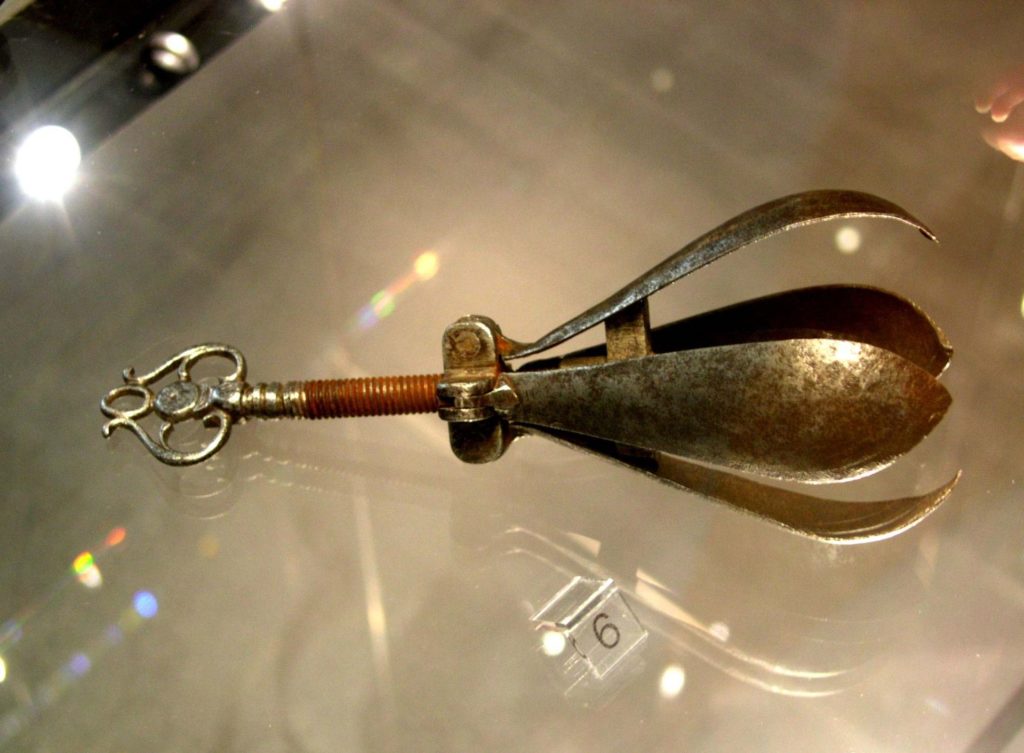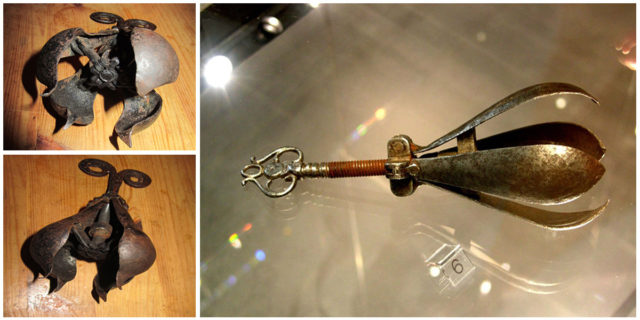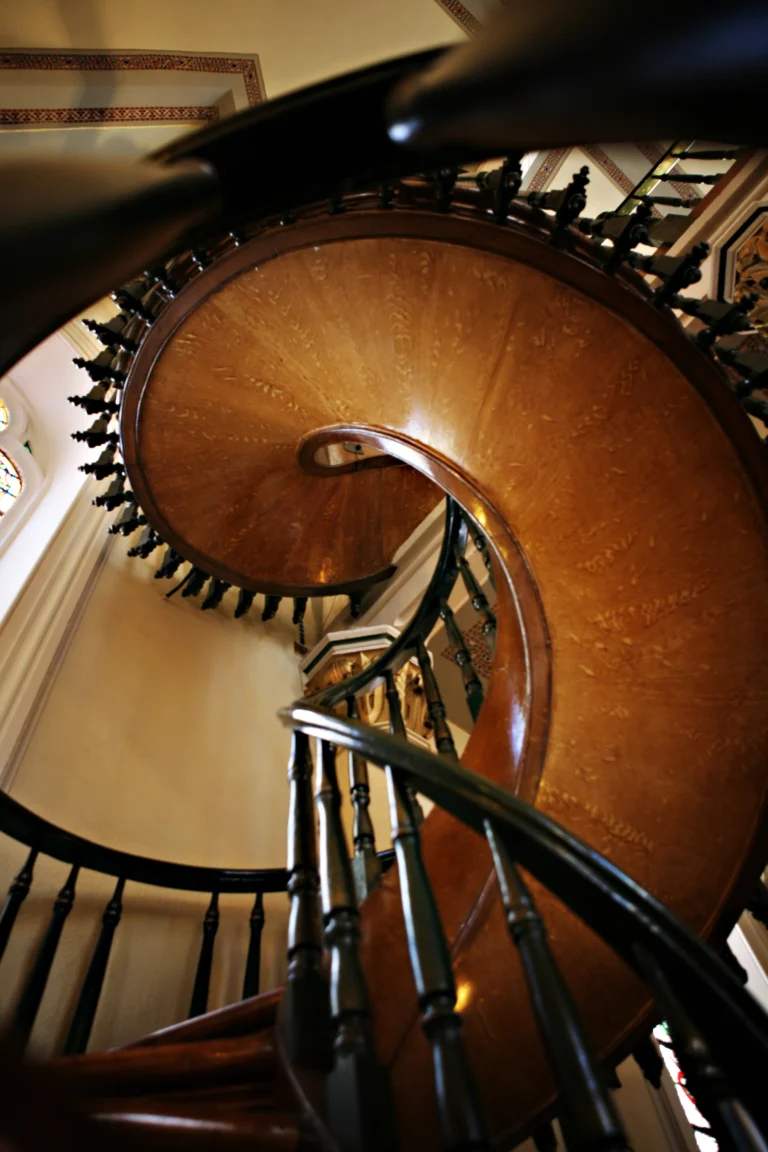Exploring the Torturous Past: The Gruesome Story of the Pear of Anguish
What Was the Pear of Anguish?
The Pear of Anguish is one of the most infamous torture devices from medieval times. Its distinctive shape and brutal functionality made it a symbol of unimaginable pain. This metallic device, resembling the shape of a pear, had leaves that would open up when a screw at the top was turned. It was designed to be inserted into a victim’s orifices — the mouth, rectum, or vagina — and expanded to cause excruciating pain. While the specifics of its invention remain unclear, it is most associated with the punishment of heretics, witches, and women accused of immorality.
Origin of the Pear Torture Device

The exact origins of the pear remain shrouded in mystery, much like many medieval instruments of torment. It is believed to have been crafted during the late Middle Ages, a time when Europe was rife with religious and social conflicts. Although not all historians agree on the authenticity of the device’s historical use, some museum artifacts have been linked to descriptions of the pear.
- Why the Pear Shape?: The pear shape is significant due to the way the device could easily be inserted into the body and then expand, making it one of the more sinister mechanisms of its time.
- Materials Used: Typically made of iron or brass, the device’s robust design ensured that it could withstand forceful turning without breaking, making it a reliable instrument for torturers.
How the Pear of Anguish Was Used in Torture
Victims subjected to the Pear of Anguish faced a grim ordeal. Inserted into the body, the device’s leaves expanded, causing internal rupturing, tissue damage, and often, death. This method was reserved for the most heinous crimes, often linked to morality and heresy, especially women accused of witchcraft or blasphemy.
“The pear was feared not only for the physical agony it inflicted but also for its association with shame and dishonor.”
— Medieval Torture Historians
Theories and Historical Evidence
While the pear torture device is widely recognized today, there remains considerable debate among historians regarding its actual use. Some argue that it is more a symbol of medieval brutality than a documented tool of torture.
Debates Around Its Existence
There is limited concrete evidence that proves widespread use of the pear device in medieval Europe. Many medieval torture devices we know of today are primarily based on writings and illustrations from later periods, leading some to speculate that the Pear of Anguish may not have been as common as once believed.
- Why Was It Associated With Specific Crimes?: The pear is most commonly linked to crimes against morality. Heretics, adulterers, and witches were believed to have faced this gruesome punishment due to the nature of their crimes, which were seen as violations against the community’s religious and social fabric.
Usage on Witches and Heretics
Witches were often accused of working with the devil, and heretics challenged the doctrines of the church. The Pear of Anguish was thus used to silence dissenters and maintain religious orthodoxy.
Targeting Women: A Historical Perspective
The device was often targeted toward women accused of adultery or sexual misconduct. In a time when women had little power or voice, the pear was a brutal reminder of their vulnerability in society.
Is It a Real or Mythical Tool?
While some devices have been preserved in museums, the Pear of Anguish is often cited as a semi-mythical invention. It remains a topic of fascination, drawing curiosity about whether it was a legend or an actual historical artifact.
Detailed Description of the Torture Method
Understanding the mechanics of the pear gives insight into why it was feared. The turning screw at the top of the device would slowly expand the pear’s leaves inside the body, causing severe internal damage.
How the Pear Functioned Mechanically
The pear’s design ensured a slow, painful process. As the leaves expanded, they would rupture internal organs, leading to hemorrhaging and eventual death in the worst cases. However, the pear was often used as a punishment tool rather than a device designed to kill immediately.
Different Versions and Variations
There were multiple variations of the pear device. Some were designed for the mouth and were used to punish blasphemers, while others were inserted into the rectum or vagina, symbolizing punishment for sexual sins.
Impact on the Victims
The Pear of Anguish was devastating, both physically and mentally.
- Physical Consequences: Victims often suffered from internal lacerations, bleeding, and long-term injuries. In some cases, the device would cause permanent damage.
- Psychological Impact: Beyond the physical pain, the humiliation attached to this form of punishment left lasting psychological scars, further dehumanizing the victims.
Comparisons With Other Medieval Torture Devices
The Pear of Anguish was not the only device used to inspire fear and control populations during the medieval period. Several other devices share similar notoriety.
The Judas Cradle vs. The Pear of Anguish
The Judas Cradle, like the Pear of Anguish, was designed to target a person’s orifices and induce excruciating pain. However, it differed by using a pointed pyramid that the victim was lowered onto, with the intent to rupture organs.
The Breast Ripper vs. The Pear Torture
Another comparable device is the Breast Ripper, which, like the pear, was often used to punish women. The Breast Ripper was specifically aimed at mutilating the breasts of women accused of infidelity or witchcraft.Misconceptions and Modern Interpretations
The Pear of Anguish continues to fascinate modern audiences, but many misunderstand its origins and use.
Separating Fact from Fiction
While it is a well-known symbol of medieval torture, there is still debate over whether it was ever widely used or if it has been sensationalized by later accounts. Most of the popular knowledge about the pear device comes from 19th-century reimaginings.
Contemporary Discussions on Historical Torture
Many modern scholars use the Pear of Anguish as a tool to examine how history remembers torture. The device serves as a stark reminder of the brutality humans are capable of when enforcing social norms or punishing deviants.
How History Is Often Misinterpreted
The Pear of Anguish shows how medieval punishment is often exaggerated or misunderstood. It’s essential to approach these stories critically and understand the broader social contexts in which they were applied.
Lessons from History: What the Pear of Anguish Teaches Us

The Pear of Anguish is not just a grim artifact of the past; it offers important insights into the human condition.
Understanding Human Cruelty in History
Torture devices like the pear reflect humanity’s darker tendencies. They were used to maintain control and enforce conformity in a time when dissent was seen as a threat to society.
Ethics of Studying Torture Devices Today
Studying devices like the Pear of Anguish allows us to understand the ethical implications of how torture was used as a tool for fear and punishment. It pushes modern audiences to reflect on the ongoing discussions surrounding human rights and justice.
References:
- HistoryDefined.net – The Pear of Anguish
https://www.historydefined.net/pear-of-anguish/ - Wikipedia – Medieval Torture
https://en.wikipedia.org/wiki/Medieval_torture
Meta Description: Learn the gruesome history of the Pear of Anguish, a medieval torture device that caused unimaginable pain and cruelty. Discover its usage and impact.






